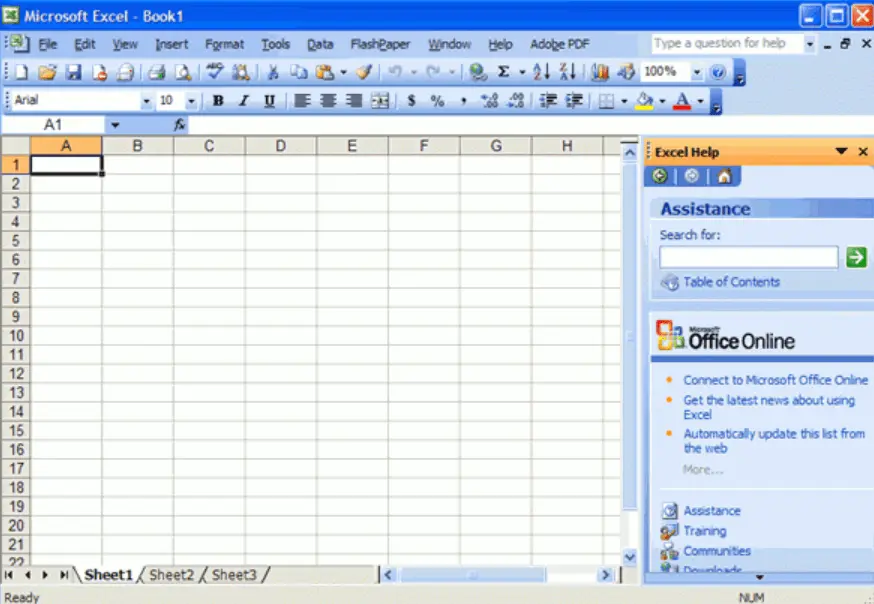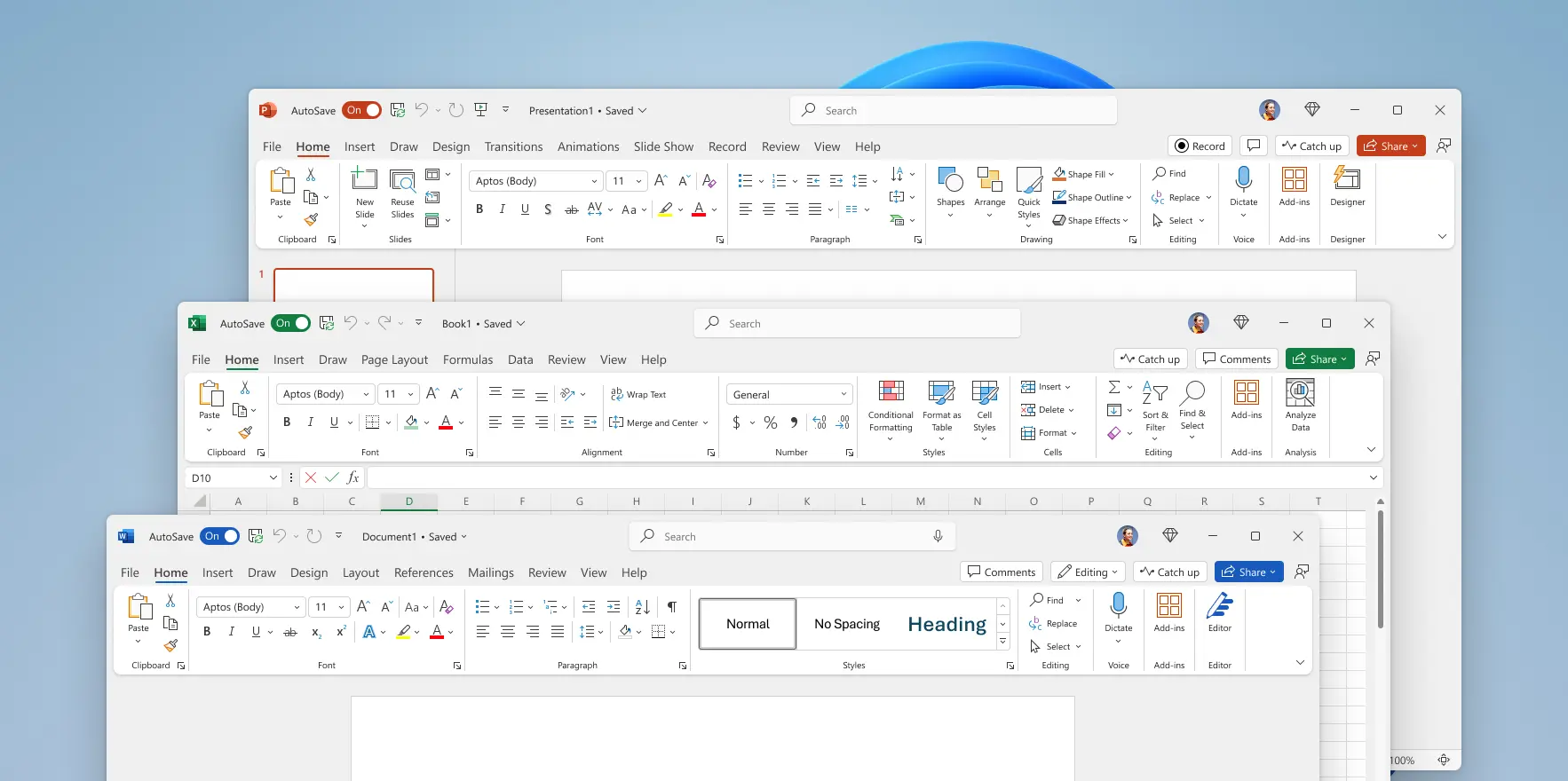Why did UI’s turn from practical to form over function?
E.g. Office 2003 vs Microsoft 365

It’s easy to remember where everything is with a toolbar and menu bar, which allows access to any option in one click and hold move.

Seriously? Big ribbon and massive padding wasting space, as well as the ribbon being clunky to use.
Why did this happen?
Microsoft was pushing all their designs to this new ribbon UI design, across their apps. I dunno why they thought that was a good idea. But I left Windows for years already. LibreOffice is just the old school layout, and if you really really want you could optionally also ribbons in LibreOffice.
Isn’t there a way to just his the ribbon?
Why did this happen?
The cynical but probably truer than we’d like to admit answer is “middle managers who bring nothing to the table but need to ‘make big changes’ to justify that promotion they’ve been chasing.”
Source: Pretty much all corporations at this point have these people, my sister’s ex-husband is one at Google.
This is so true of so many companies nowadays. The fact of the matter is that the big leaps in profit/efficiency/effectivness have basically all happened in most of these industries and so often people are pressed to make these sweeping changes because there isn’t any real way to improve on a system like this.
Reading Ed Zitron’s coverage of the Google antitrust cases is pretty eye opening.
Mostly because it says basically what you just said: we’ve already reached pretty much peak efficiency in these forms, and since they can’t bleed out more money via “efficiency” they’re now leaning towards “How many customers can I piss off while increasing ad interactions by 1%?” As Zitron points out, they’re literally chasing tiny percentage points of growth through “how many people can we piss off and still grow?” instead of offering anything new and useful. It’s just “we’re entrenched, so why would we try anything risky at all ever?” all the way down.
I love Ed. He is a fantastic writer.
Corpos are down voting you because their butts hurt. You are right.
Change for the sake of change is so dumb. I’m tired of pointless UI changes every so many years because some middle manager and their designers need to wow some dumb exec to get a promotion and they do so just by rearranging all the existing functionality because the product itself is already a complete solution that doesn’t actually need a new version. Sadly, this mentality even creeps into FOSS spaces. Canonical and Ubuntu wanting to reinvent the wheel with Unity, Mir, Snap, etc. GNOME radically changing their UI all the time.
Gnome does not radically change their design all the time.
The last time they did that was Gnome 3, which came out 13 years ago.
And you may think it was change for the sake of change, but I’d disagree. The workflow is amazing. Using anything else just feels clunky to me now.
The changes made in Gnome were based on UX usability studies, not just changing shit for the sake of changing it.
You’re mistaking your dislike of Gnome not operating like a traditional windows-like UX for it being objectively bad.
To be fair to the Open Source community, Canonical is a private company, and so it’s not really a shocker that they keep promoting bullshit tied to their own ecosystem. Especially with someone like Mark Shuttleworth involved, he was one of the early rich out of touch space tourists, long before Bezos looked like an idiot coming back from space. The profit motive always infects everything it touches.
Complete side note, I saw your pfp and checked your profile to confirm my suspicions. Thank you for your work on OpenRGB! It’s been a great tool for managing the LEDs on my computer.
View-> Then the little v arrow in the right. Switch to tabs only, the Ribbon UI will now only appear when you click one of the titles like home or View.
So it acts like a menu bar …. But with extra clicks to make it go away
Clearly not, no
Funny story, before they did the 2007 redesigns, they asked users what they wanted to be added; 95% said features that were already in Office.
The Ribbon was designed to make features more findable.
Alas.
I’ve used Office 2003, 2007, 2010 etc. all the way up to 365 not for work purposes, but just happened to have interacted with all of the versions.
I have to say, I seriously don’t know what happened, but Office 2003-2007 feels the most stable and least clunky versions of Office (at least Word) in terms of basic word processing.
I learned how to properly edit and format text in Word in university in a way that I could, without fail, reproduce almost any text design you could think of. When I was learning it on Office 2007 I believe, everything was so stable and predictable. Now when somebody asks me to format some text with 365, the styles functionality continually keeps bugging out and doing stupid shit that I basically can’t recover from unless I create a blank file.
In conclusion, Office 2007 > 365
/rant
Am I wrong, or isn’t Office 365 a web app? Not really a 1:1 comparison.
There’s Office online, which has a free tier and a “365” tier, whatever that means. Does it mean that you have Office available 365 days a year? Good luck on February 29th, I guess. /j
Anyway, Microsoft transitioned Office into a subscription-based model, which I abhor because I just want to have a piece of software without feature updates, just bug and security fixes. So Office 365 is just normal Office, but on a subscription basis.
Not really correct. Microsoft is moving ALL their apps to offline web apps. Modern Outlook and Modern Teams are the first to go.
Modern…
://///
I miss native apps being the norm (and I don’t mean Chromium disguised as a native app).
Office no longer exists as it used to. The applications are being turned into offline websites. See Modern Outlook, Modern Teams ect. They are cost cutting all the different app platforms down to one. An offline website for each app.
peak enshitification
No. Microsoft 365 (previously office 365) is not a web app. They have web apps, and some licenses (the bare bones $6/mo one) only has web apps. But overall the suite of apps can’t be defined as web based.
Not to be confusing, but some of the apps are only web apps, but those are “other” apps than you’re probably thinking of. Like Planner or Power Automate. The “office” apps like outlook, word, excel and PowerPoint all have desktop and web versions included.
Same, but for Excel.
Also, JFC the save menu in Office 365 is Cthulhu-level madness.
Can you tell me more about that save menu?
the windows save menu has remained mostly the same since win3. Office products used the regular windows save menu for ages. Then suddenly they introduce a monstrosity that takes up the whole screen and throws decades of useful design out the window. If i describe it further I shall descend into madness
The ribbon is one thing, the flat design and obfuscating tools/settings are a far bigger issue.
Everyone wanted to compete with Apple
Contrast is Satan to designers, because being able to distinguish the zones of a UI messes with their perfect colour blocking.
Makes me think of people who want to cut down all trees along streets and replace all grass with concrete. So that all would be empty and similar and “in order”.
By the way! I can see how this (color blocking) may resonate with one’s ADHD and the stereotype that many designers have it.
But if any such a designer is reading this, I want them to understand that using their … creations with ADHD is harder, not easier, than using normal, traditional UIs.
For the designer this may be a distracting and irritating contrast, because they have no use for information conveyed by it. For the user it’s the opposite, they are distracted and irritated because of not being able to quickly find what they need.
and here I thought complaints about the ribbon were late 2000s, early 2010s stuff, incredible we still get these kinds of things in 2024
Eh, I’ve just moved on to something I like more. When I do have to use MS Office, I just get frustrated and try that much harder to not use it again.
It’s crazy how we’ve gone from a seemingly inescapable monopoly on office software in the 2000s to it being optional. I remember working at a previous job where everyone used Google Sheets by choice and they would raise their eyebrows if you spun up Excel.
Part of the problem is that people who grew up on phones and tablets are now old enough to start entering the tech industry as UI developers.
Btw, just so you know, Libre Office has multiple UIs, incliuding a Ribbon-like variant. View > User Interface.
But they let you choose.
last time i used libre office was probably more than a decade ago and it was atrocious. did they make things better?
because i still don’t have ms office and would like to have an alternative to edit documents other than uploading a file to google docs and downloading it back.
I think they got better.
But there’s still other (closed source) office suites in a pinch.
Exactly, this is the way. I use it w/o the ribbon, but I like that the ribbon is an option for those who like it.
Well a big problem is when a UI has a small learning curve that then gives a huge benefit in usability, letting the user decide based on their feelings might lead to them having a worse off experience in the end, is that something you’d be open to getting people complaining about not finding their options day and night while they stubbornly avoid the ribbon?
Sure. If they prefer to not use the ribbon, UX have two options:
- advertise the ribbon better
- improve the non-ribbon UX
Eliminating the non-ribbon UX is more likely to alienate those users than to actually improve anything.
But the ribbon is the improvement over the non-ribbon UX. There’s just no pleasing some people who don’t want anything to change, even if they’re currently struggling to use all the tools they have available and they’ve stockholmed themselves into learning workarounds. Someone else posted about how before the ribbon, when asked for features to add, people asked for features that they already had access to, but didn’t know about it
It’s really not though. The ribbon:
- takes up way more space
- essentially hides features I actually use
- can change depending on context, which is jarring for a new user
And that’s why there should be two options, just like LibreOffice has done. Have a simpler UX for new users, perhaps based on a ribbon UI, and leave the more compact UX for power users. The problem isn’t that the ribbon sucks innately, it’s just that it’s not ideal for power users.
- It’s about the same size as the before screenshot if you added one more toolbar, except you have better groupings
- you can customize it, if you find features you frequently use are in hard to reach spaces. I doubt it actually fully hides the thing, and they’ve also majorly improved the search at the same time as they deployed the ribbon so you can use that as backup. It’s not like features weren’t hidden before anyway, you just didn’t use them yourself at the time to notice.
- you mean the extra tabs it can get? It never fully changes everything afaik, just get a few more tabs that are otherwise not needed.
I simply dislike the connection that clean modern design is for noobs and power users just need a list and that’s it. It’s not like the design is made without consulting or taking in data from advanced users, and if you’re truly a power user you can customise it and make it your own. No, I believe that’s just stubbornness to trying something new, or lack of openness to do so when it’s not a priority to evolve your workflow, you simply want to get from A to B. Feel free to correct me, but tight compact layouts aren’t inherently power user friendly, just as padded grouped layouts aren’t inherently anti-power user
- right, and I hated the initial one, and I’d usually customize it to get rid of a row
- the problem is that everything is differently sized, so it’s hard to just drop part of it; e.g. I use shortcuts for bold, italic, and underline, but just getting rid of those doesn’t particularly help
- really? I could’ve sworn it changed based on what you were doing, like editing a table or cell or something. I honestly just use Google Drive (work) and LibreOffice (home) instead because Office annoys me
clean modern design is for noobs and power users just need a list and that’s it
Modern design has, by definition, a lot of negative space, which by definition means fewer functions can fit on the screen at the same time. I certainly appreciate clean design, but the tools I use the most as a power user are fairly obtuse to get into:
- vim - my editor, and the learning curve there is like a cliff
- CLI tools like ripgrep + regex - learning regex properly is something for later in a 4-year CS degree
- Rust programming language - learning curve is basically a meme (it’s not that bad though)
- favorite game is EU4 - complex strategy game with a ton of variables and numbers; second favorite: Dwarf Fortress
And other than vim and regex (learned in school), I learned all of those (and more!) after entering the workforce, some of those ~10 years after, and I’m constantly learning new tools (e.g. we use macOS at my current job, and this is my first time using macOS full-time in my career). So I don’t think it’s really about being stubborn, but frustration when the tools you’re familiar with change drastically. If it was an option, I might try it and swap between it sometimes, but if I’m forced to use the new UX, I’m going to be pissed.
I’m not saying “tight compact layouts are inherently power user friendly,” I’m saying power users are comfortable with a certain workflow and know where all their tools are, and then when everything gets jumbled, they have to go relearn everything. It’s like when my MIL comes and reorganizes our kitchen, my SO and I get pissed trying to find everything again. Once you learn a compact tool, it’s really easy to find what you want, whereas when a tool has a lot more negative space, less fits on the screen and you have to go find the stuff you want (i.e. click a different ribbon menu, then click the tool, instead of just clicking the tool).
That’s why I think both should be an option. If you decide your workflow only needs a handful of tools, you should be able to ditch the ribbon and make a toolbar with just those tools (which includes some in the menus).
I would like to see them add something like the VSCode command pallette. That way if I know the name of the tool but can’t remember or don’t want to go click for it, I just just type the name and fuzzy find it.
Doesn’t office already have a very powerful search bar?
I bet it’s capitalism.
The answer for enshittification of the entire reality seems to always be
capitalism.
It’s not UI backsliding. It’s Microsoft being incompetent. I have no idea how they’re still in business, and astounded at their valuation. It seems like everything they manage to push out is just barely functioning
Moving away from Office and Windows and so forth is a nightmare for any larger company. If you use specialized software, it might very well only run on Windows or only have an integration into Office. Even if you could, you then have to retrain staff to use Libre Office, Linux and other alternatives. You also will have problems converting, changing servers and so forth.
So companies just do not switch. That is how Microsoft makes money. They really do not care that much about private users. That is only usefull so people can use their products.
deleted by creator
I’m ashamed to say I used to work for one. How do you like having licenses to use your printer? I might have enjoyed it even if only I were a sadistic personality type.
Yea, I agree that Office 2003 was the pinnacle of Office UI design. And I’d go so far as to say that about Windows 2000.
Having controls in predictable shapes and locations really contributed to “ease of use”. One of my pet peeves is the more recent trend where clickable elements aren’t obviously so. Such as a string of text that one has to hover across and see the cursor change shape to know that it’s clickable.
As others have said, I think a significant part of why the UIs have changed since then is to accommodate touch screens and “webification”.
'Glad to see your posting. I thought I was just being curmudgeonly :)
Not sure I follow, even in the example above there’s many icons that are interactive but aren’t enclosed in a button, do you have any other examples?
no, I’m willing to die on the hill that the ribbon UI is one of the greatest UIs period - especially how it was done in office 07 and 10. As a computer noob at the time, it was a huge improvement over the previous office 2003 UI.
The icons always gave you a good idea what something was doing, important functions were bigger and when you for example selected a table the table tab was visible and with a different color so you knew that you could do things with that table.
I think however many 3rd party programms did the ribbon UI poorly or had not enough features for it to make sense.
I will stand with you on the hill defending the Office 2010 UI, it was beautiful, clear and easy to work with.
The flat design of 2013+ was a mistake.









